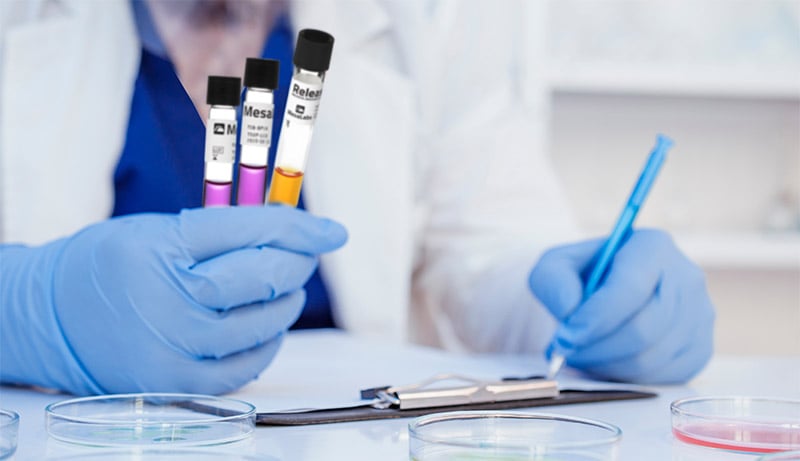How to Choose a Validated PCD for EO Sterilization: Selection Tips

Introduction
Selecting appropriate Process Challenge Devices (PCDs) for ethylene oxide sterilization requires systematic understanding of biological indicator systems, D-value relationships, and resistance matching methodologies. Validation engineers must match PCD resistance characteristics to specific sterilization challenges while ensuring documentation and performance consistency necessary for regulatory compliance.
The selection process determines whether sterilization validation programs provide scientifically defensible evidence of process control while optimizing operational efficiency and cycle development timelines.
Understanding D-Value Relationships
D-values represent the time required to reduce biological indicator populations by one log under specific conditions. Commercial PCDs provide nominal D-values established through resistometer testing using standardized parameters (600 mg/L EO, 54°C, 60% relative humidity). This standardized testing enables quantitative comparison and selection based on calculated resistance requirements.
The biological indicator system encompasses the bacterial spores, inoculated substrate, and primary packaging working together to produce labeled D-values. When biological indicators are embedded within medical device packages, the system resistance characteristics change significantly due to packaging materials and sterilant penetration patterns.
Real-world loading conditions typically increase biological indicator resistance by 10-fold or more compared to naked indicators. A standard biological indicator with a 3-minute D-value may demonstrate 30+ minutes effective resistance when embedded in complex device packaging. This resistance multiplication necessitates PCDs with D-values spanning 3-58 minutes to accommodate diverse sterilization challenges.
Biological Indicator Configuration Options
Self-Contained Biological Indicators (SCBIs) provide the fastest results while eliminating clean bench activation requirements. These systems integrate the biological indicator, growth medium, and activation mechanism in a single device, enabling rapid decision-making for time-sensitive operations.
Spore strips in glassine offer intermediate resistance levels with proven reliability for routine monitoring applications. These indicators require aseptic culturing into growth media but provide consistent performance across diverse sterilization conditions.
Naked spore strips provide maximum flexibility for specialized applications while requiring careful handling protocols. These indicators enable custom resistance matching but demand rigorous aseptic technique throughout handling and processing.
Pouch Engineering and Resistance Control
Mesa's PCD systems utilize six engineered pouch types with proprietary plastic film combinations that control EO permeability at precisely defined rates. Type 3 pouches provide minimal resistance barriers, while Type 2 pouches create maximum resistance for any given biological indicator.
The systematic combination of pouch types and biological indicators enables D-values from 3-58 minutes, ensuring appropriate resistance matching without validation compromise. This engineered approach eliminates trial-and-error development while providing scientifically validated performance characteristics.
Selection Methodology
Effective PCD selection begins with calculating target D-values based on half-cycle exposure times and required spore log reduction (SLR). Divide half-cycle exposure time by 8 SLR to establish target resistance parameters for external PCD selection.
The Mesa Selection Set provides systematic identification of appropriate resistance levels through four PCD configurations with decreasing resistance: PCD 2.13 (58 min), PCD 4.13 (50 min), PCD 6.13 (35 min), and PCD 7.13 (26 min). This bracketing approach enables optimal configuration identification during validation studies.
Process the Selection Set during half-cycle validation alongside internal controls. The PCD configuration demonstrating partial positive results while internal devices achieve complete kill represents the appropriate resistance level for routine monitoring implementation.
Implementation Considerations
Load configuration consistency becomes critical because sterilant penetration patterns directly affect PCD performance. Mirror-image pallet designs ensure consistent chamber conditions regardless of load orientation, preventing placement errors from compromising validation results.
Handling protocol standardization requires consistent timing for biological indicator removal from PCD pouches. EO-resistant pouch materials that protect indicators during sterilization also retain potential residual EO that can affect results if handling timing varies between validation and routine cycles.
Environmental parameter variations between laboratory resistometers and production sterilizers require consideration during acceptance criteria establishment. Temperature control, humidity management, and vacuum system performance all influence PCD results compared to standardized laboratory conditions.
Technical Support and Validation
Mesa's application engineering team provides consultation on PCD selection based on cycle parameters, load configurations, and validation requirements. This technical support accelerates selection processes while ensuring appropriate resistance matching for specific applications.
Validation support includes guidance on acceptance criteria, documentation requirements, and trending protocols that ensure sterilization programs meet regulatory expectations while providing reliable process control.
Conclusion
Successful PCD selection requires systematic application of scientific principles supported by validated tools and comprehensive technical documentation. Mesa's resistometer-tested PCD systems enable evidence-based sterilization validation that supports regulatory compliance while optimizing operational efficiency.
The investment in proper PCD selection provides long-term value through reduced validation costs, improved process reliability, and enhanced regulatory defensibility across medical device sterilization operations.
Check out the PCD® Selection Guide and the PCD® Validation Guide to learn further.